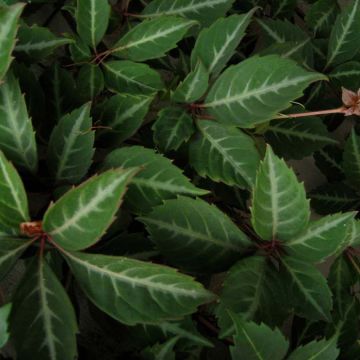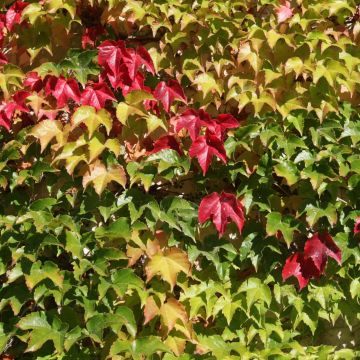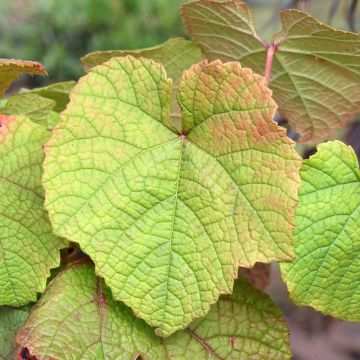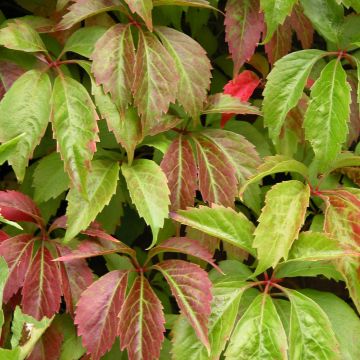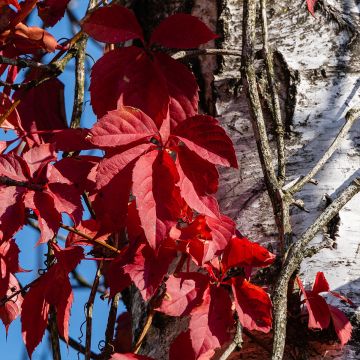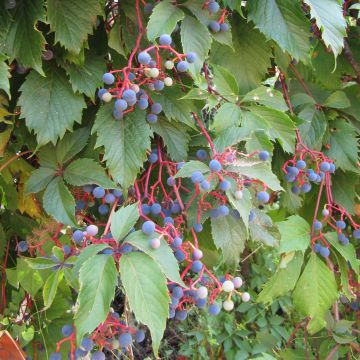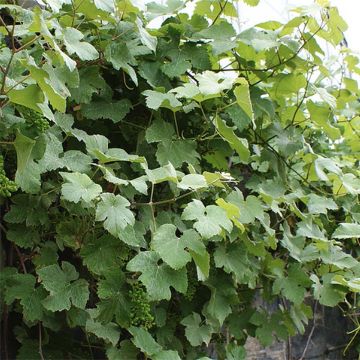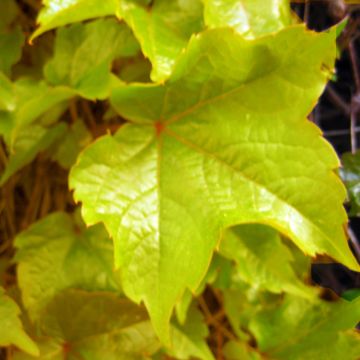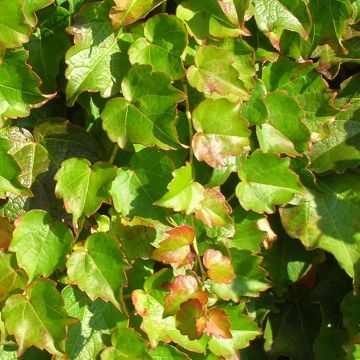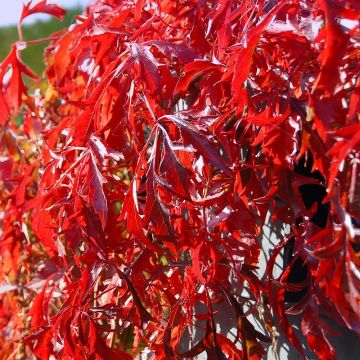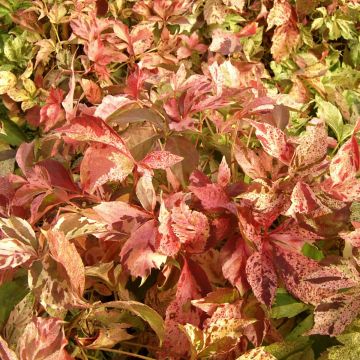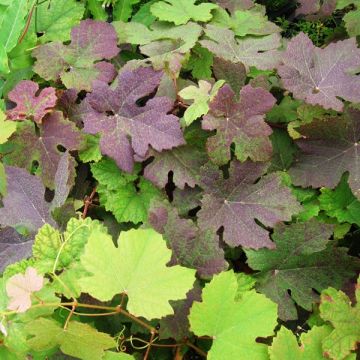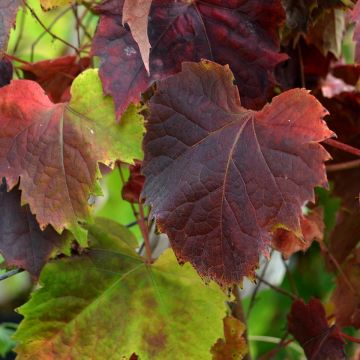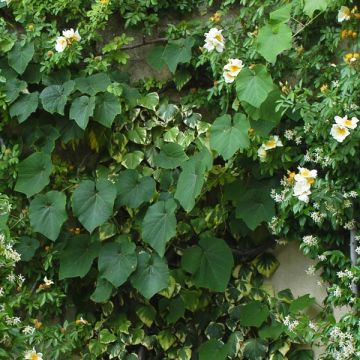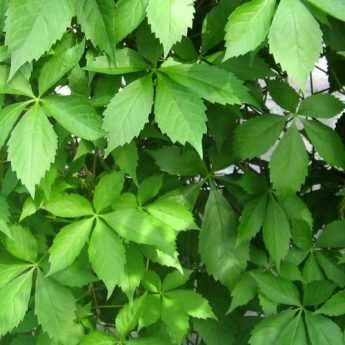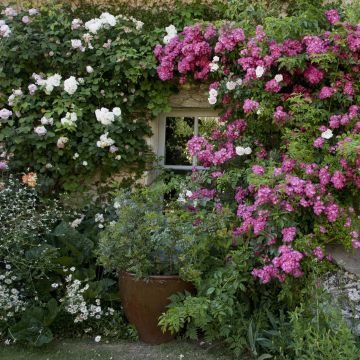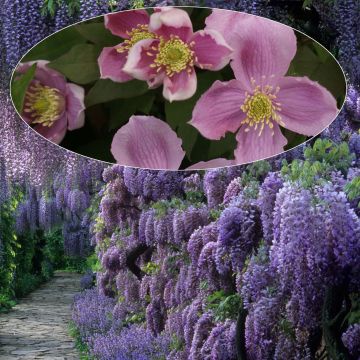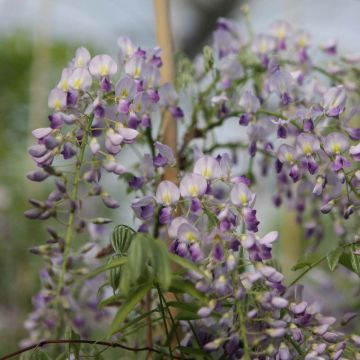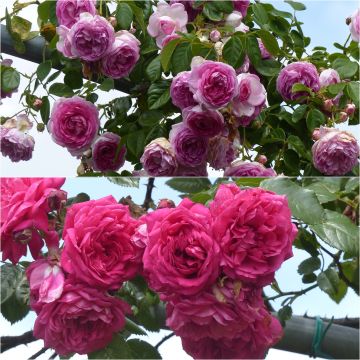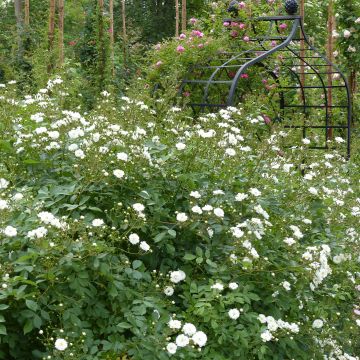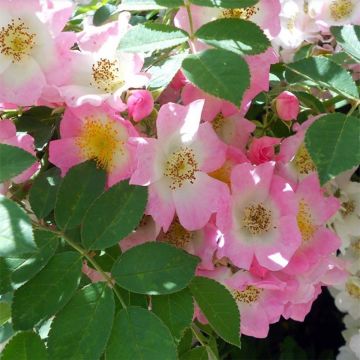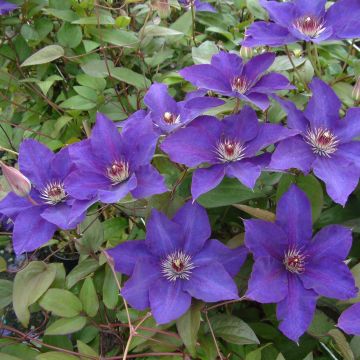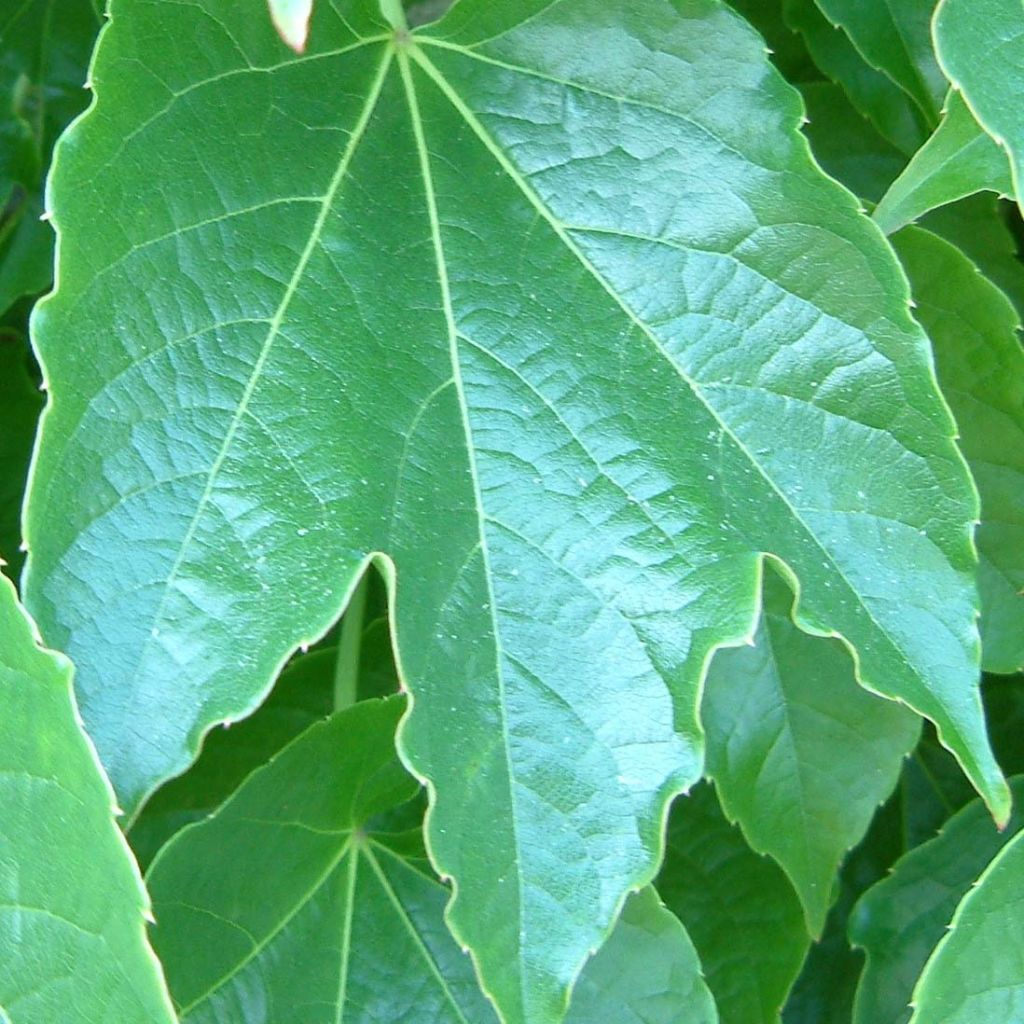

Parthenocissus tricuspidata Green Spring- Boston Ivy
Parthenocissus tricuspidata Green Spring- Boston Ivy
Parthenocissus tricuspidata Green Spring
Boston Ivy, Japanese creeper, Japanese Ivy
Why not try an alternative variety in stock?
View all →This plant carries a 6 months recovery warranty
More information
We guarantee the quality of our plants for a full growing cycle, and will replace at our expense any plant that fails to recover under normal climatic and planting conditions.
Does this plant fit my garden?
Set up your Plantfit profile →
Description
The Parthenocissus tricuspidata 'Green Spring' is a Japanese Virginia creeper with vigorous growth, perfect for covering a large wall or facade in just a few years. This variety develops young reddish leaves in spring, which unfold into large, shiny green leaves that turn scarlet in autumn. In late summer, the vibrant foliage is adorned with small dull blue berries. This deciduous climbing plant, unlike ivy, attaches itself to its support through small suction cups that do not risk damaging masonry. While it tolerates all exposures, its foliage will be more colourful with a few hours of sunlight during the day.
The Parthenocissus tricuspidata (synonym Ampelopsis tricuspidata), also known as Boston Ivy or Japanese Creeper, belongs to the family Vitaceae. It is native to eastern Asia (central and northern China, Korea, Japan) where it grows in woods and forests, as well as rocky hills. This plant is naturalised in France.
The cultivar 'Green Spring' distinguishes itself from the species by its vigour and large leaves, beautifully coloured in autumn. It is a woody, deciduous climbing plant with rapid growth, which can easily exceed 15-16 m (49-52ft) in all directions at maturity. Its foliage consists of large, long, and wide leaves divided into 3 rounded lobes with a widely toothed margin. They are purplish when they emerge, then take on a bright apple green hue before darkening to a more or less dark green in summer. The autumn colours are truly sumptuous, ranging from orange to scarlet red, with shades enhanced by a glossy texture. In summer, its greenish inflorescences, insignificant in size, give way to blue-black berries. The tendrils have 5 to 9 small branches, initially ending in a small swelling that can transform into an adhesive ball, coated with a sticky substance, when in contact with a surface. The foliage falls in autumn.
Virginia creepers are elegant, romantic, and lavish: they transform any support into a flamboyant drapery at the end of the season, offering an almost unreal spectacle capable of attracting the gaze from afar and capturing the wanderer in a melancholic contemplation. They are perfect for adding lushness to vertical as well as horizontal surfaces. The Parthenocissus tricuspidata 'Green Spring', hardy up to -15°C, proves to be very accommodating in terms of soil and exposure, with its colours being more vibrant when its foliage receives sunlight for part of the day. Unrestricted pruning throughout the year will keep it in its space. It can be planted at the base of a wall or facade, or even on a steep slope. If the wall is sound, there will be no degradation due to the Virginia creeper. It also protects the habitat upon which it grows from excessive heat in summer.
Report an error about the product description
Parthenocissus tricuspidata Green Spring- Boston Ivy in pictures


Plant habit
Flowering
Foliage
Botanical data
Parthenocissus
tricuspidata
Green Spring
Vitaceae
Boston Ivy, Japanese creeper, Japanese Ivy
Cultivar or hybrid
Other Parthenocissus - Virginia Creeper
View all →Planting and care
The Parthenocissus tricuspidata 'Green Spring' can be planted in autumn or spring and is easily grown in most of our regions. It prefers fresh, fertile, clayey but well-drained soils. It is not very demanding regarding the soil pH, which can be slightly acidic, neutral, or slightly alkaline, and it tolerates periods of moderate drought in deep soil once well established. Plant this Virginia creeper in a sunny or semi-shaded position to enhance the beautiful autumn colours. Be careful not to damage the root ball! Train the young plants until they can cling on their own. Monitor the growth of this non-invasive climbing plant and pinch off misdirected voluble stems.
Planting period
Intended location
Care
Planting & care advice
This item has not been reviewed yet - be the first to leave a review about it.
Similar products
Haven't found what you were looking for?
Hardiness is the lowest winter temperature a plant can endure without suffering serious damage or even dying. However, hardiness is affected by location (a sheltered area, such as a patio), protection (winter cover) and soil type (hardiness is improved by well-drained soil).

Photo Sharing Terms & Conditions
In order to encourage gardeners to interact and share their experiences, Promesse de fleurs offers various media enabling content to be uploaded onto its Site - in particular via the ‘Photo sharing’ module.
The User agrees to refrain from:
- Posting any content that is illegal, prejudicial, insulting, racist, inciteful to hatred, revisionist, contrary to public decency, that infringes on privacy or on the privacy rights of third parties, in particular the publicity rights of persons and goods, intellectual property rights, or the right to privacy.
- Submitting content on behalf of a third party;
- Impersonate the identity of a third party and/or publish any personal information about a third party;
In general, the User undertakes to refrain from any unethical behaviour.
All Content (in particular text, comments, files, images, photos, videos, creative works, etc.), which may be subject to property or intellectual property rights, image or other private rights, shall remain the property of the User, subject to the limited rights granted by the terms of the licence granted by Promesse de fleurs as stated below. Users are at liberty to publish or not to publish such Content on the Site, notably via the ‘Photo Sharing’ facility, and accept that this Content shall be made public and freely accessible, notably on the Internet.
Users further acknowledge, undertake to have ,and guarantee that they hold all necessary rights and permissions to publish such material on the Site, in particular with regard to the legislation in force pertaining to any privacy, property, intellectual property, image, or contractual rights, or rights of any other nature. By publishing such Content on the Site, Users acknowledge accepting full liability as publishers of the Content within the meaning of the law, and grant Promesse de fleurs, free of charge, an inclusive, worldwide licence for the said Content for the entire duration of its publication, including all reproduction, representation, up/downloading, displaying, performing, transmission, and storage rights.
Users also grant permission for their name to be linked to the Content and accept that this link may not always be made available.
By engaging in posting material, Users consent to their Content becoming automatically accessible on the Internet, in particular on other sites and/or blogs and/or web pages of the Promesse de fleurs site, including in particular social pages and the Promesse de fleurs catalogue.
Users may secure the removal of entrusted content free of charge by issuing a simple request via our contact form.
The flowering period indicated on our website applies to countries and regions located in USDA zone 8 (France, the United Kingdom, Ireland, the Netherlands, etc.)
It will vary according to where you live:
- In zones 9 to 10 (Italy, Spain, Greece, etc.), flowering will occur about 2 to 4 weeks earlier.
- In zones 6 to 7 (Germany, Poland, Slovenia, and lower mountainous regions), flowering will be delayed by 2 to 3 weeks.
- In zone 5 (Central Europe, Scandinavia), blooming will be delayed by 3 to 5 weeks.
In temperate climates, pruning of spring-flowering shrubs (forsythia, spireas, etc.) should be done just after flowering.
Pruning of summer-flowering shrubs (Indian Lilac, Perovskia, etc.) can be done in winter or spring.
In cold regions as well as with frost-sensitive plants, avoid pruning too early when severe frosts may still occur.
The planting period indicated on our website applies to countries and regions located in USDA zone 8 (France, United Kingdom, Ireland, Netherlands).
It will vary according to where you live:
- In Mediterranean zones (Marseille, Madrid, Milan, etc.), autumn and winter are the best planting periods.
- In continental zones (Strasbourg, Munich, Vienna, etc.), delay planting by 2 to 3 weeks in spring and bring it forward by 2 to 4 weeks in autumn.
- In mountainous regions (the Alps, Pyrenees, Carpathians, etc.), it is best to plant in late spring (May-June) or late summer (August-September).
The harvesting period indicated on our website applies to countries and regions in USDA zone 8 (France, England, Ireland, the Netherlands).
In colder areas (Scandinavia, Poland, Austria...) fruit and vegetable harvests are likely to be delayed by 3-4 weeks.
In warmer areas (Italy, Spain, Greece, etc.), harvesting will probably take place earlier, depending on weather conditions.
The sowing periods indicated on our website apply to countries and regions within USDA Zone 8 (France, UK, Ireland, Netherlands).
In colder areas (Scandinavia, Poland, Austria...), delay any outdoor sowing by 3-4 weeks, or sow under glass.
In warmer climes (Italy, Spain, Greece, etc.), bring outdoor sowing forward by a few weeks.


































